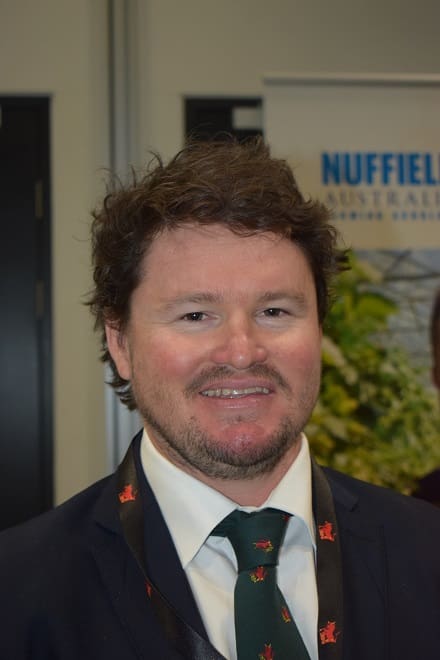ADVANCES in genetically-modified plant technology and a better understanding of how to grow the crop in a tropical environment have reignited efforts to develop a cotton industry in northern Australia.
The challenge of growing cotton in the north’s harsh environment of wet and dry seasons, summer temperature extremes and heavy insect attack thwarted a number of attempts from the 1960s.
But, proponents of the latest push to establish a viable industry in the north believe they now have the management where-with-all and insect-resistant varieties to make a go of it this time round.
Trial plantings and a smattering of commercial crops grown over the past three years from the Ord Valley in Western Australia’s north to the Gulf of Carpentaria in north Queensland have shown promise.
The results have been encouraging for Kimberley Agricultural Investment (KAI) farm manager and 2018 Nuffield scholar, Luke McKay, Kununurra, who said if the cotton industry could meet the challenges, it had the potential to drive development in the north.
“Trial results across the north and around the Ord are currently showing yields can be achieved that are comparable to the industry averages in temperate Australia. And (fibre) quality results have been fantastic,” he said.
“KAI and other Ord farmers are not alone in their ambitions to develop irrigated farming in northern Australia. Outside the Ord Valley, there are currently operations being undertaken to develop and farm large areas in the Flinders and Gilbert catchments of north Queensland, with cotton in mind to be the base crop.
“2019 has seen the commencement of trials in the Northern Territory as well.”
Speaking at the Nuffield Australia National Conference, Mr McKay said one of the main challenges was the difficulty of managing and controlling the cotton plant in a northern, tropical environment.
“What we are trying to do in the north is manipulate a perennial plant to become an annual in a climate where it has all the ingredients available to it to become a perennial. If you give a cotton plant a chance in northern Australia it will become a tree and not be productive for you,” he said.
“The focus of what we are doing now is on in-crop management and the decision-making around the tools you have available to influence the plant’s behaviour as an annual and keep it in check to make sure it is productive on an annual basis – how you can tweak the nitrogen to keep the plant in check, how you can use growth regulants given the weather forecasts, etc.”
Mr McKay, who grew up on a cotton farm in New South Wales, used his Nuffield scholarship to travel the world and study cotton production in Brazil, Zambia, China and the United States.
It was in Brazil, which has a similar climate to northern Australia, where he learnt a lot about growing cotton in a wet season and how the Brazilians managed crops that grew taller than in Australia’s established cotton growing areas.
“A lot of Australian producers struggle with the concept of tall cotton. But in Brazil it is a non-issue. 1.3 metres tall, 1.5 metres – who cares? They are focused on letting the plant do what it wants to do and tweaking it to get production out of it,” he said.
“There is no rule book. The key is to be in the crop, read it, see what the weather forecast has done, know your system, know your crop, try to understand what the crop is telling you.
“You need to assess where the crop is going to go and use Pix (plant growth regulator) for managing that.”
Mr McKay said key to being able to grow cotton in northern Australia had been the advancement in Bollgard technology that gave plants built-in resistance to insect pests which were particularly prevalent in the warmer, wetter times of the year.
 Previously cotton was only grown during the dry season which starts around April, but insect-resistant lines now allow the crop to be planted earlier in the year to take advantage of potentially higher yields coming out of the wet season.
Previously cotton was only grown during the dry season which starts around April, but insect-resistant lines now allow the crop to be planted earlier in the year to take advantage of potentially higher yields coming out of the wet season.
“GM technology has enabled us to grow cotton in northern Australia again because it allows us to plant in an ideal planting window. Cluster caterpillar previously had an impact on the industry by limiting production if planting in January/February. Bollgard 3 has enabled us to plant earlier and take advantage of better yield conditions.”
Despite the momentum for establishing a viable cotton industry, impediments remain, not least the lack of infrastructure and ginning facilities.
There are currently no cotton gins in the north. Cotton from KAI’s farms in the Ord has to be transported to a gin at Dalby in southern Queensland, 3500 kilometres away.
Mr McKay said with the potential for the introduction of pests and diseases from nearby Asia, the north was also constantly on guard for biosecurity threats.
“Fall army worm has been found in Indonesia. It has come through Africa and India. Cotton blue disease is in Timor,” he said.
“Fortunately, both are on the radar. Quarantine inspections are keeping an eye out for fall army worm and the Cotton CRC is working on cotton blue disease.”
Mr McKay’s Nuffield scholarship was supported by Cotton Australia and the Cotton Research and Development Corporation.
Grain Central: Get our free daily cropping news straight to your inbox – Click here



HAVE YOUR SAY